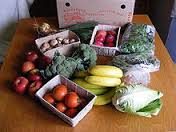A
new research study by Transparency market Research (TMR) states that
the global market for energy drinks has been registering a tremendous
rise over the past few years. The research report, titled “Energy
Drinks Market - Global Industry Size, Share, Trends, Analysis And
Forecasts 2016-2024,” presents an unbiased assessment of this
market on the basis of its historical performance, current status,
and future prospects.
Download
exclusive Sample of this
report:http://www.transparencymarketresearch.com/sample/sample.php?flag=B&rep_id=531
According
to the research report, the increased demand for improved
functionality in drinks is likely to influence the global market for
energy drinks significantly during the forecast period. The
increasing awareness among consumers regarding health and fitness as
well as the health benefits offered by energy drinks are also
anticipated to boost the sales of these drinks across the world in
the near future, reports the market study.
Over
the forthcoming years, sugar-free energy drinks will surface as the
most prominent trend in the global energy drinks market. With the
increasing number of consumers cutting down on sugar consumption,
triggered by the growing prevalence of diabetes, a lucrative
opportunity is developing in the sugar-free energy drinks segment for
market players. The obesity pandemic is projected to boost the
low-calorie energy drinks considerably in the years to come, finds
the research report.
Predominantly,
Latin America, Europe, the Middle East and Africa, North America, and
Asia Pacific are considered as the key geographical segments of the
global market energy
drinks. Among these, Asia Pacific and Latin America are likely to
witness a substantial rise in the sales of energy drinks in the years
to come, thanks to the presence of a young consumer base and the
dynamic economy of countries in these regions.
Mature
regional markets, including North America and Western Europe, are
also expected to provide lucrative growth opportunities to energy
drink producers on account of the increasing preference of consumers
for healthier alternatives over sodas, notes the market study.
The
research report also analyzes the competitive landscape of the global
energy drinks market by reviewing the profiles of the prominent
players operating in this market. Analysts have studied the
historical performance and studied the future prospects of each
market players thoroughly in order to define the current market
hierarchy. The leading producers of energy drinks are focusing on
product innovation in terms of flavors and nutritional value in a bid
to withstand this highly competitive environment and improve their
visibility.
Some of the leading companies producing energy drinks are PepsiCo, Red Bull GmbH, Hansen Natural Corp., and The Coca-Cola Co., states the market study.














